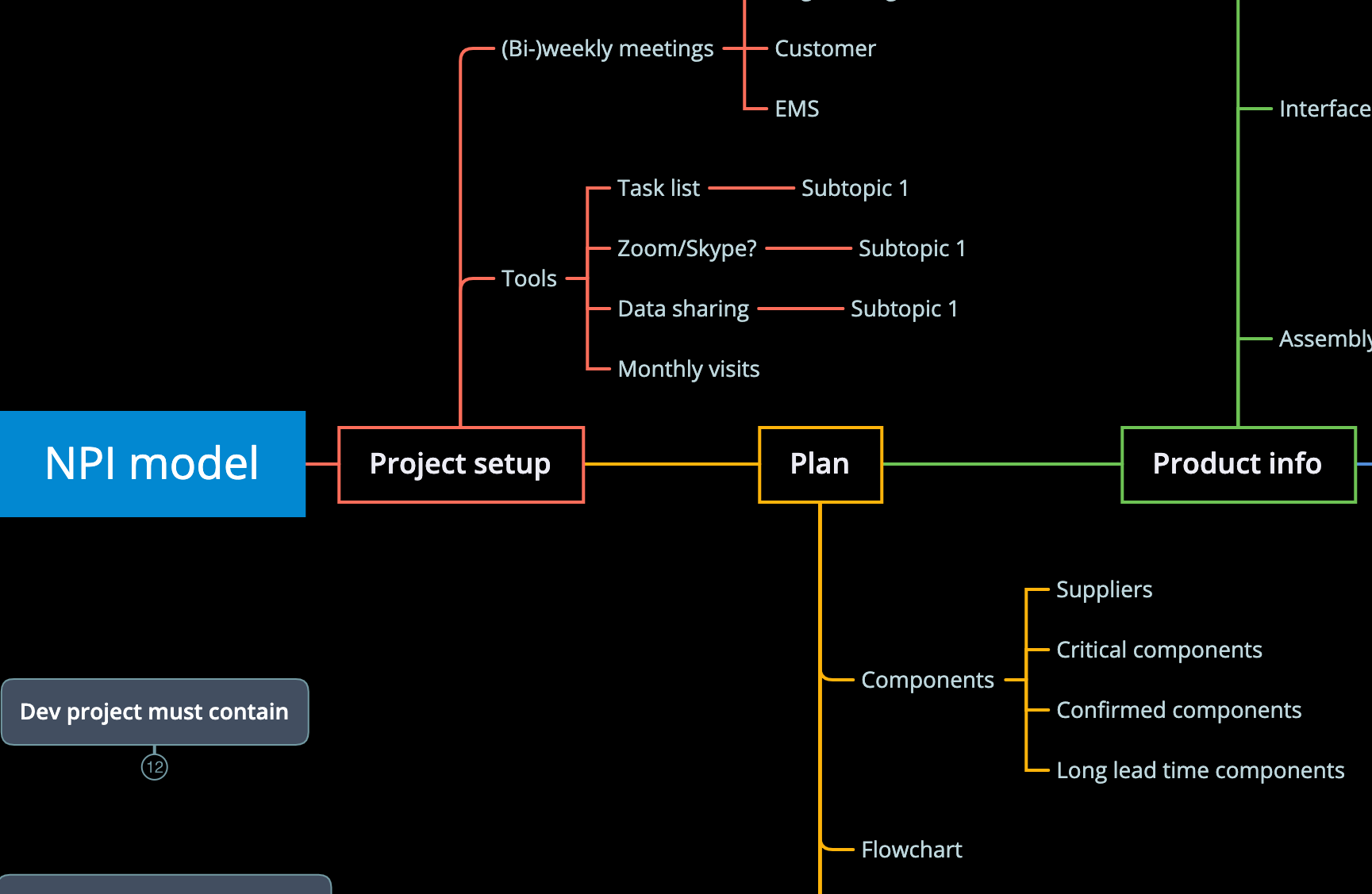Service the entire NPI process
Since 2012, Cosesy is dedicated into NPI (New Products Introduction) and manufacturing of IoT (Internet of Things) products.
By utilizing our knowledge and experience, we help customers bring prototypes into production, lead it through certifications, solve the most critical manufacturing issues and aim for low-cost high-quality manufacturing.
We inspire, motivate, guide customers, thereby making it possible to optimize production at lower costs, higher reliability and larger quantities. We ensure that production meets the requirements for performance, certifications and "push button" deliveries.
Our customers and partners include industry leaders in China, Thailand and Europe, where products are distributed worldwide.
Let's make your products affordable, reliable and prolong their lifetime.
Contact us and get a free call without obligation, find out how we can help you bring your fantastic product into production and out into the world.
What is NPI?
The NPI phase brings a product from proof of concept to mass production.
Each new product will go through three phases below:
1. Prototype maturation
Prototype build, P1
Prototype build, P2
2. Certification
3. Mass production
Pilot production, PP + MP
HIGHLIGHTS OF OUR SERVICE

BOM (Bill of Material) REVIEW
The essential procedure before final prototype manufacturing is design review + BOM review, DFM and DFT, benefits of a thorough BOM review:
√ Reduce cost and lead time
- √ Identify costly components and suggest alternatives, and advise on sourcing possibility
- √ Identify long lead-time components and plan stock of critical components to solve IC crisis

DFM (Design for manufacturing) REVIEW
Before a design can be locked and sent for certification, a series of complete sets of electronics, mechanics and packaging must be prepared.
√ The interplay between mechanics and electronics must be checked
√ the assembly process and test process must be planned, and must checked to ensure efficiency and scalability.
√ The EMS's internal documentation and procedures must be verified
√ Evaluate design risks and suggest preventive actions

TEST & CERTIFICATION
√ Design test fixtures, implement, program, calibrate and verify reliability
√ Achieve automatic testing instead of operator control
√ Plan testing without the need for embedded test SW in the product
Documentation as well as quantized testing provide reliable products.

QA MANAGEMENT
The objective is to achieve better quality, longer product life, less scrap, less waste, minimize delivery delay, through below procedure:
Map customer-specific requirements for IQC, QC and OQC system in the process
Define and implement traceability system
Review and implementation of QA system terms
QA FOLLOW-UP AFTER PRODUCTION: Batch production evaluation and production yield reports, Report product design errors and solution, Identify and remove Root Causes of process efficiency and product defects

DOCUMENTATION
We provide comprehensive documentation of procedures, assembly instructions, and quality standards, among others:
- Production flow diagram
- P1, P2, PP evaluation reports
- QA plan, IQC standards
- Definition of '' golden '' and '' rotten '' samples
- Assembly instructions
- Testing and programming instructions -
- Testing and programming of equipment specifications, incl. fixtures, stencils maintenance, etc.
Agreement with on safe production and test reliability

TRACEABILITY
Delivering to the global market is challenging as regulations vary from country to country and new rules are updated from time to time.
To keep each delivery's specifications under control, we help define and implement a traceability system so you can easily identify each delivery and track the manufacturer's root.
Contact us to know more about applications of barcode, QR code, NFC tag...
Download
FAQ
When to produce in China and when in Denmark?
A: In general, China is the better choice when the product has complex mechanical structure, complex manual assembly, or has lots of parts in different materials. Vice versa, in Denmark.
Can I really trust an electronics manufacturer?
A: Yes.
A contract manufacturer has no products of its own, therefore no competition and no motivation for copying.

